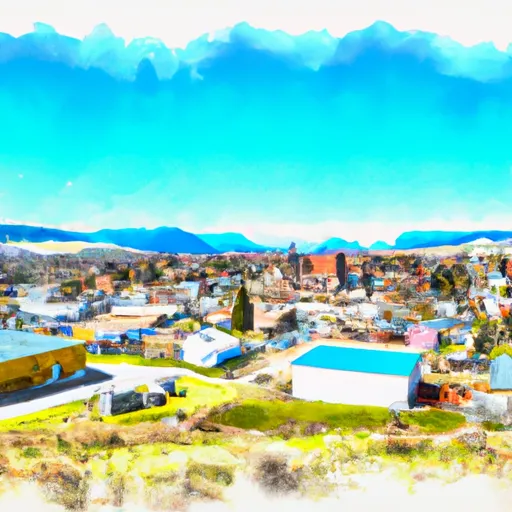-
 Snoflo Premium
Snoflo Premium
Get unlimited access to all our content
With no Ad interruptions! - Start Your Free Trial Login with existing account
Jordan
Eden Index
Climate
7.0
•
Recreation
•
Community
2.3
•
Safeguard
3.4/10

Jordan, Montana is a small town located in central Garfield County in the northeastern part of the state. The climate in Jordan is classified as semi-arid, characterized by hot summers and cold winters. Summers see average temperatures ranging from the mid-80s to low 90s Fahrenheit, while winters can drop below freezing with occasional snowfall.
Hydrologically, the area is dominated by the Missouri River system, with the Musselshell River flowing nearby. These rivers provide ample opportunities for various water-based activities such as fishing, boating, and kayaking. Anglers can find an abundance of fish species, including catfish, walleye, and northern pike.
Jordan offers a range of outdoor recreation opportunities. The town is surrounded by vast prairies and rolling hills, making it perfect for hiking, camping, and wildlife viewing. The nearby Charles M. Russell National Wildlife Refuge provides further exploration with abundant birdwatching, hunting, and nature photography opportunities.
With its unique climate, hydrology, and diverse outdoor activities, Jordan, Montana offers a charming escape for nature lovers and outdoor enthusiasts seeking to experience the beauty and serenity of the region.
What is the Eden Index?
The Snoflo Eden Index serves as a comprehensive rating system for regions, evaluating their desirability through a holistic assessment of climate health, outdoor recreation opportunities, and natural disaster risk, acknowledging the profound impact of these factors on livability and well-being.
Climate Health Indicator (CHI): 7.0
Jordan receives approximately
319mm of rain per year,
with humidity levels near 68%
and air temperatures averaging around
7°C.
Jordan has a plant hardyness factor of
3, meaning
plants and agriculture in this region thrive during a short period during spring and early summer. Most
plants will die off during the colder winter months.
By considering the ideal temperature range, reliable water supplies, clean air, and stable seasonal rain or snowpacks, the Climate Health Indicator (CHI) underscores the significance of a healthy climate as the foundation for quality living.
A healthy climate is paramount for ensuring a high quality of life and livability in a region, fostering both physical well-being and environmental harmony. This can be characterized by ideal temperatures, reliable access to water supplies, clean air, and consistent seasonal rain or snowpacks.
Weather Forecast
Streamflow Conditions
Fort Peck Lake
Area Rivers
Fort Peck Lake
Snowpack Depths
Fort Peck Lake
Reservoir Storage Capacity
Fort Peck Lake
Groundwater Levels
Recreational Opportunity Index (ROI):
The Recreational Opportunity Index (ROI) recognizes the value of outdoor recreational options, such as parks, hiking trails, camping sites, and fishing spots, while acknowledging that climate plays a pivotal role in ensuring the comfort and consistency of these experiences.
Access to outdoor recreational opportunities, encompassing activities such as parks, hiking, camping, and fishing, is crucial for overall well-being, and the climate plays a pivotal role in enabling and enhancing these experiences, ensuring that individuals can engage in nature-based activities comfortably and consistently.
Camping Areas
| Campground | Campsites | Reservations | Toilets | Showers | Elevation |
|---|---|---|---|---|---|
| Hell Creek State Park | 55 | 2,256 ft |
Catastrophe Safeguard Index (CSI):
The Catastrophe Safeguard Index (CSI) recognizes that natural disaster risk, encompassing floods, fires, hurricanes, and tornadoes, can drastically affect safety and the overall appeal of an area.
The level of natural disaster risk in a region significantly affects safety and the overall livability, with climate change amplifying these risks by potentially increasing the frequency and intensity of events like floods, fires, hurricanes, and tornadoes, thereby posing substantial challenges to community resilience and well-being.
Community Resilience Indicator (CRI): 2.3
The Community Resilience Indicator (CRI) recognizes that education, healthcare, and socioeconomics are crucial to the well-being of a region. The CRI acknowledges the profound impact of these elements on residents' overall quality of life. By evaluating educational resources, healthcare accessibility, and economic inclusivity, the index captures the essential aspects that contribute to a thriving community, fostering resident satisfaction, equity, and social cohesion.

